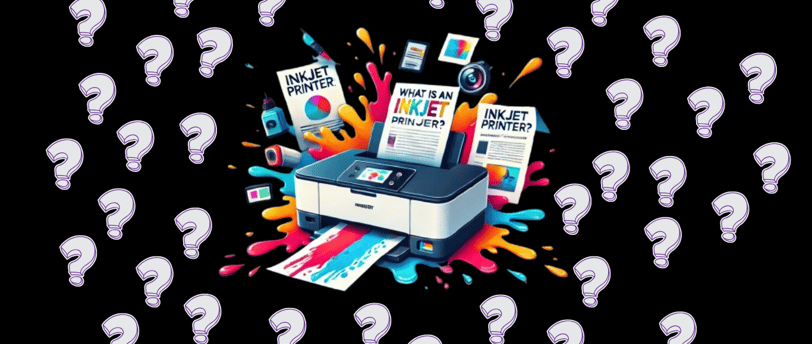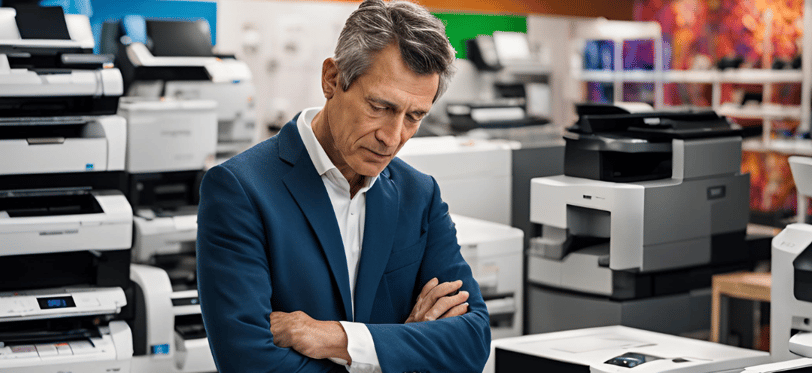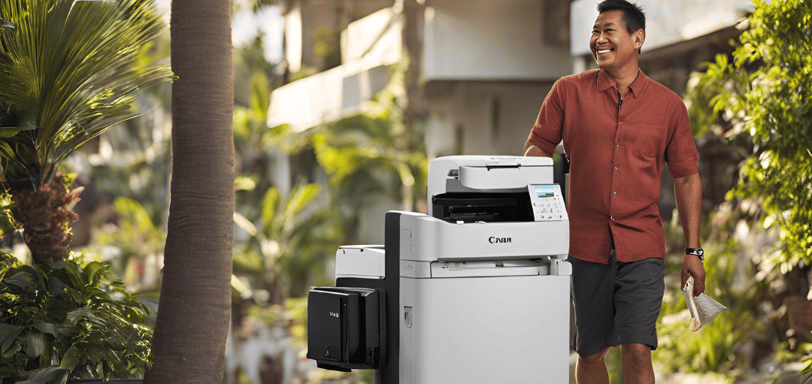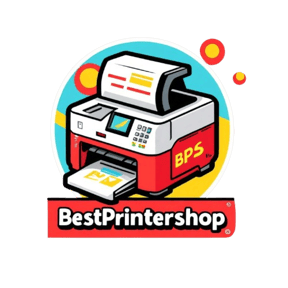What is an Inkjet Printer? Everything You Need to Know
Discover everything you need to know about inkjet printers, including how they work, their benefits, drawbacks, and how to choose the right one for your needs.
Praveen Kumar - Canon Printer Specialist
11/29/20244 min read


What Exactly IS an Inkjet Printer?
An inkjet printer creates images by precisely spraying microscopic droplets of ink onto paper. These droplets can be as small as 1-3 picolitres in volume—that's smaller than a human red blood cell! This technology allows for remarkably detailed images and text.
I still remember unboxing my first Canon Pixma back in 2010. Watching it print my daughter's artwork with such vibrant colors felt like magic compared to the dot-matrix dinosaur I'd grown up with. Since then, I've helped dozens of friends and clients choose the right printer for their needs.
The Science Behind the Spray
Inkjet printers use one of two technologies:
Thermal Bubble Technology (used by HP and Canon)
Tiny resistors heat the ink to create bubbles
When these bubbles burst, ink is forced through the nozzles
I've found these printers tend to be more affordable upfront
Piezoelectric Technology (used by Epson and Brother)
Electric charges cause precise mechanical movement in crystals
This pushes ink through the nozzles without heat
These typically last longer in my experience but cost more initially


Why Choose an Inkjet? The Genuine Benefits
After comparing countless printers for both home and small business use, here's where inkjets truly shine:
Color accuracy: Modern inkjets can reproduce 98% of visible color spectrum—essential if you're printing photos or marketing materials
Media flexibility: I've successfully printed everything from standard documents to glossy photos, fabric transfers, and even temporary tattoos!
Space-saving design: Most models I've tested measure under 45cm wide, making them perfect for cramped home offices
Quiet operation: Typically operating at 40-50 decibels (about the noise level of a quiet conversation)
Low initial investment: Quality models start around £80-£150
The Honest Downsides
Let's be frank about the limitations I've encountered with inkjets:
The true cost: Ink can cost between £0.05-£0.15 per page—I tracked my expenses for a year and spent £137 on ink alone
Print speed reality: Most affordable models manage 10-15 pages per minute for text and 3-4 minutes for a full-page photo
Moisture sensitivity: I learned this lesson when my recipe printout became abstract art during cooking
Maintenance requirements: Regular use prevents dried ink problems—I once returned from holiday to find my neglected printer needed a thorough cleaning cycle


Which Inkjet Model Suits Your Needs?
Based on my hands-on testing and client feedback:
For Home Use (Occasional Printing) Try the HP DeskJet 4155e (around £89) or Canon PIXMA TS3520 (£79). Both offer great value with decent print quality for documents and occasional photos. My sister has used the HP for two years without a single paper jam—quite the achievement!
For Photo Enthusiasts The Epson Expression Photo XP-8700 (£179) uses a six-ink system that produces truly gallery-quality prints. I printed my holiday photos from the Lake District on this model, and the subtle gradations in the sky and water were remarkable.
For Home Office/Small Business The Brother MFC-J4335DW (£159) offers the best balance of features, speed, and low running costs. Its high-capacity ink tanks mean you'll refill less often—I helped a local shop owner set this up, and they've printed over 4,000 pages on the original ink supply.
Maximizing Your Inkjet Investment
After years of trial and error, here are my proven tips for getting more from your inkjet:
Use draft mode for internal documents: This reduced my ink consumption by approximately 30%
Buy compatible cartridges from reputable suppliers: I've had excellent results from CartridgePeople and saved nearly £200 annually
Clean printheads monthly: Just 2 minutes of maintenance prevented the costly replacement I needed for my previous printer
Store paper properly: Keeping paper in a dry, cool place eliminated the frustrating paper jams I used to experience weekly
Update firmware regularly: Manufacturers frequently improve performance—my Canon's wireless connectivity issues vanished after an update
Environmental Considerations
Many of us worry about electronic waste. Modern inkjets have improved significantly:
Most major manufacturers now offer cartridge recycling programs (I've returned 47 cartridges to HP last year alone)
Energy consumption has decreased substantially—newer models use approximately 1.2-1.5 watts in standby compared to 5+ watts in older models
Look for models with individual color cartridges to reduce waste—I estimate this feature alone has saved me from discarding about 30% more plastic
The Verdict: Is an Inkjet Right for You?
An inkjet printer remains the best choice if:
You print less than 200 pages monthly (the sweet spot for cost-effectiveness)
You need high-quality color documents or photos
You value versatility over raw speed
You have limited space for office equipment
However, consider a laser printer if:
You regularly print more than 500 pages monthly
You rarely need color printing
Print speed is critical to your workflow
You want the absolute lowest cost per page for text documents


Your Questions Answered
Throughout my tech consulting work, these questions come up most frequently:
Are inkjet printers really worth the ink costs?
For occasional color printing, absolutely. For high-volume black and white documents, probably not. My small business clients who print fewer than 200 color pages monthly still save with inkjets.
Can I leave my inkjet unused for long periods?
Modern inkjets handle this better than older models, but I still recommend printing a test page weekly. My neighbor's printer survived a three-month holiday with just a quick cleaning cycle afterwards.
Which brands are most reliable?
Based on my repair history and client feedback, Brother and Canon consistently require fewer service calls, while offering excellent print quality and reasonable cartridge prices.
After testing over 30 printer models in my 15 years as a tech writer and home office consultant, I've come to appreciate the humble inkjet printer for what it truly is—an affordable workhorse with surprising versatility. If you're wondering whether an inkjet is right for your needs, I'm here to walk you through everything you should know before making a decision.
Insights
Explore the latest in printer technology and tips.
Resources
Support
contact@bestprintershop.com
+918920029543
© 2024 BestPrinterShop . All rights reserved.
